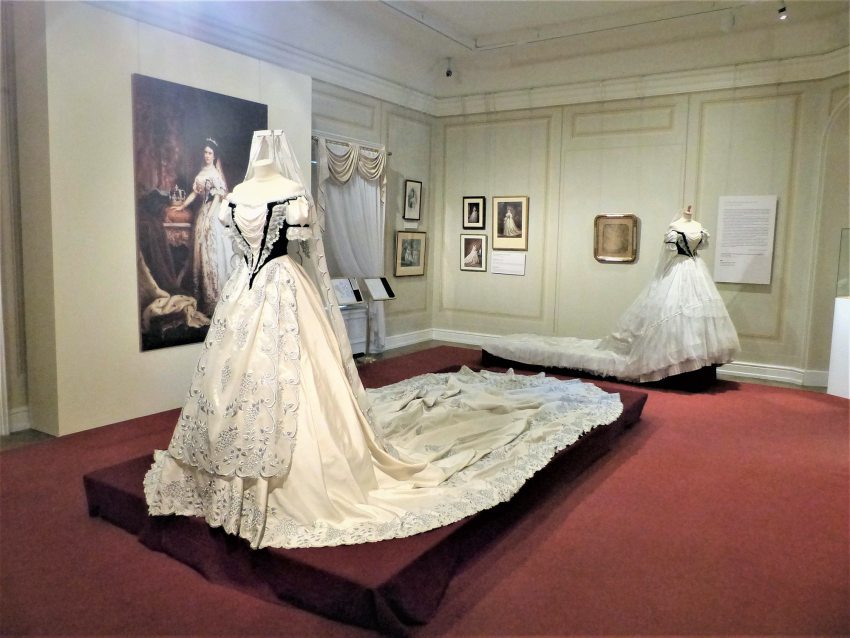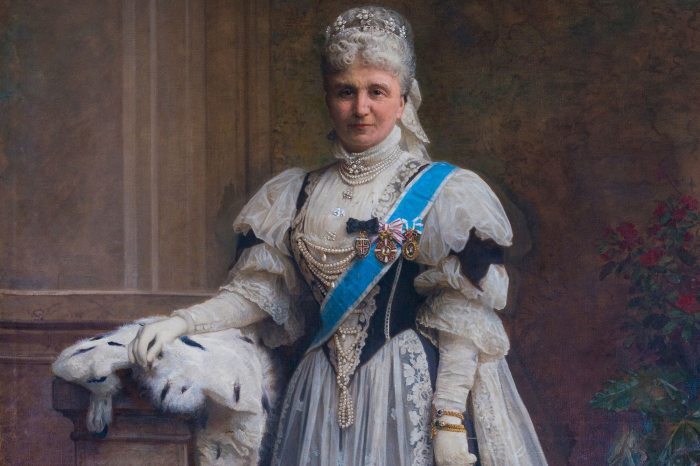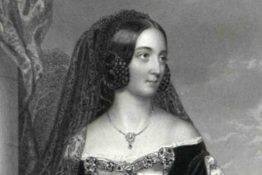A glimpse into the wardrobes of the Hungarian nobility! – We present the most beautiful Hungarian ceremonial dresses
For centuries, politics and prevailing ideals have influenced what a nobleman wore to family and official functions. We pin tricolored cockades on our clothes on 15 March to remember the heroes of the 1848 Revolution, while in the mid-19th century, ladies and gentlemen wore 'díszmagyar', i.e. ceremonial Hungarian dress to show their patriotism and to send a message that they had not forgotten the ideals of the War of Independence.

Throughout history, politics has influenced the development of women's and men's fashion. This was also the case in 19th century Hungary, where as early as 1830, at V. Ferdinand's coronation celebrations, the members of the aristocracy wore the ‘díszmagyar’, i.e. the national ceremonial attires.
From this date is reckoned the spread of the Hungarian ceremonial attire. This was the way the Hungarian nobility showed their separation from the Austrian court during the years of passive resistance.
On Ferenc Deák's advice, they cultivated Hungarian traditions and the mother tongue in their private lives, and wore the ‘díszmagyar’ (Hungarian ceremonial attire) equally at family events such as weddings, private parties, and at official functions, court receptions and balls.
Apron and veil
The upper part of the women's ceremonial national dress consisted of a ‘pruszlik’, i. e. a tight, close-fitting vest with a corset in the front, and a white blouse with puff sleeves. This was matched by a large skirt with a train, usually made of expensive, heavy silk material decorated with embroidery. A typical accessory was the apron and veil, usually made of tulle or lace. Aristocrats' gowns were usually decorated with flowers and vines embroidered with gold and silver thread. Married women wore lace bonnets, to which they attached a veil with jewelled clips, which consisted of two parts, one slung over their left shoulder and the other reaching to their waist at the back. Unmarried women wore a chaplet of velvet and flowers, pearls and precious stones on their heads.
Dolmány and spur boots
The men's ‘díszmagyar’ (ceremonial national attire) consisted of a fur-trimmed outer coat, the ‘mente’, a fitted jacket, the ‘dolmány’ made of coloured velvet, trimmed with gold or silver braid, tight trousers, fine leather spur boots, a bejewelled belt, a sword and a cap with an eagle or heron feather. Famous historical figures of the period were often painted or photographed in this costume. Thus, we can still see István Széchenyi, Gyula Andrássy or Mór Jókai in their díszmagyar.
Women in jewellery and diamonds
Prime Minister Gyula Andrássy hired an English governess, Mary Elizabeth Stevens, for his children, who was always happy to detail in her letters home what men and women wore in Hungarian villages, castles and in the higher society.
Reading her letters makes you realise how people who lived 150 years ago actually felt and dreamt as we do, and how dressing was just as important in the life of a young woman then as it is today.
Mary was very enthusiastic about telling her family about the dresses she wore to the ball at the Vigadó in Pest, and she was always amazed to describe the Hungarian attires of the members of the Andrássy family. Gyula Andrássy's mother, for example, wore a green silk dress with a white lace apron, a diamond necklace and diamond bracelet, a white lace bonnet and a white veil fastened with a diamond clip. In January 1866, Gyula Andrássy's wife Katinka presented herself to the Empress in Buda in a white moiré silk dress during an official visit of the imperial couple Franz Joseph and Elisabeth. The dress was decorated with black lace and the lace apron was black, too. On her 'pruszlik' were diamond pins, and on her head was a diamond crown with three emeralds, from one side of which fell a black veil, which reached almost to the ground at the back. Her skirt ended in a heavy four-metre-long train, which was the standard length at the time. It was not only her dress that made Katinka a success at the reception, she was also the one the Empress, who already spoke Hungarian by that time, had the longest conversation with. She asked her about her children and when she had been to Vienna.
Grandeur at the coronation
The díszmagyar also played a leading role at the coronation ceremonies in 1867, when the Hungarian aristocrats attending the coronation, and even Franz Joseph and Elisabeth herself, dressed in this ceremonial Hungarian national dress. Letters home from the English governess and newspaper reports of the time tell us what expensive garments the guests appeared in. The cavalry regiments of the royal guard were lined up between the castle and Matthias Church, and behind them was a line of distinguished citizens. The citizens of Pest were resplendent in blue and white, wearing velvet cloaks trimmed with fur on their shoulders, and feathers fluttered from fur hats in their hands. Even their saddlebags were made of blue cloth trimmed with silver. But the citizens' dress was nothing like the magnates’. Form the plume-shaped jewellery of Baron Wenckheim's hat huge emeralds were dangling, while both the horse's saddle and saddle-cloth of Prince Esterházy’s horse were full of precious stones.
Of course, Franz Joseph and Queen Elizabeth were not far behind.
Sisi was already given a ‘díszmagyar’ at the time of her wedding, which she loved very much, wore often both at official Hungarian events and at functions in Vienna, and in January 1866 she received the Hungarian delegation in a new Hungarian ceremonial dress.
However, for the coronation, she had to wear an outfit she had never worn before, so she had a skirt which had lilac flowers embroidered in it with silver thread, an apron and a veil, all three sewn in Brussels. In her book Queen Elizabeth and the Hungarians - Friendship or Love?, Barbara Káli-Rozmis says that Elizabeth did not want to burden the court treasury, so the dress was not too expensive for the occasion, costing around 5,000 francs. But when she learned that her attendants, the twelve Hungarian ladies of the palace, were going to wear sumptuous toilets, several of them with silver threads, while Mrs. György Majláth, the wife of the country judge, was to wear a gown embroidered with gold threads, she had to consider how she could dress herself up, since it would not have been proper for her to appear in a less expensive and less splendid gown than her ladies. So she took the diamonds from her jewels and sewed them on her dress, in the centre of the lilac flowers. The end result was a dress sparkling with thousands of diamonds.
We can also see at the ceremonial dresses
We can admire Queen Elizabeth's coronation gown thanks to the dress designer Mónika Czédly, who created the most original and most accurate copy of the costume for the anniversary of the coronation, the 8th of June 2017. It is decorated with real hand-made lace, which lace-maker Túrós Istvánné worked on for eight hours a day for a whole year.
More than 4,000 Swarovski crystals have been used to replace the brilliants in the reconstruction, with real pearls sparkling on the top part.
The dress has been exhibited in several cities abroad and in our country. The next exhibition will be in Szombathely, where you can see the works of Mónika Czédly, including a copy of Queen Elisabeth's first díszmagyar from 1854, and another Hungarian ceremonial attire based on a painting by Sándor Wagner, the upper part of which is identical to the upper part of the coronation dress. The exhibition Sisi - Queen in Black and White is open from 24 March to 28 August at the Savaria Museum. And in Austria, a major exhibition on Queen Elizabeth will open at Halbturn Castle on 8 April, featuring more than 20 of the dress designer's dress reconstructions, including all the díszmagyar dresses. In addition, the Hungarian ceremonial dress of Ida Ferenczy, Sisi's lady-in-waiting, which was redesigned in 1896 for the Millennium celebrations, will be on display too and was reconstructed by Mónika Czédly.
The aforementioned Mrs György Majláth, née Stefania Prandau-Hilleprand, whose golden thread-embroidered dress she wore at her coronation can be admired in the original at the Ars et Virtus exhibition in the Hungarian National Museum in Budapest. This 19th-century gown is one of the most spectacular artefacts in the exhibition, which runs until 15 March. For those who cannot visit the program in person, you can view the dress virtually from home here.
Literature:
Fábri Anna: Hétköznapi élet Széchenyi István korában
Káli-Rozmis Barbara: Erzsébet királyné és a magyarok – Barátság vagy szerelem?
Podhorányi Zsolt: Dámák a kastélyban
Stevens, Mary Elizabeth: Levelek az Andrássy-házból (1864-1869) – Egy angol nevelőnő levelei
Wéber Anikó: Az ellenállók vezére









